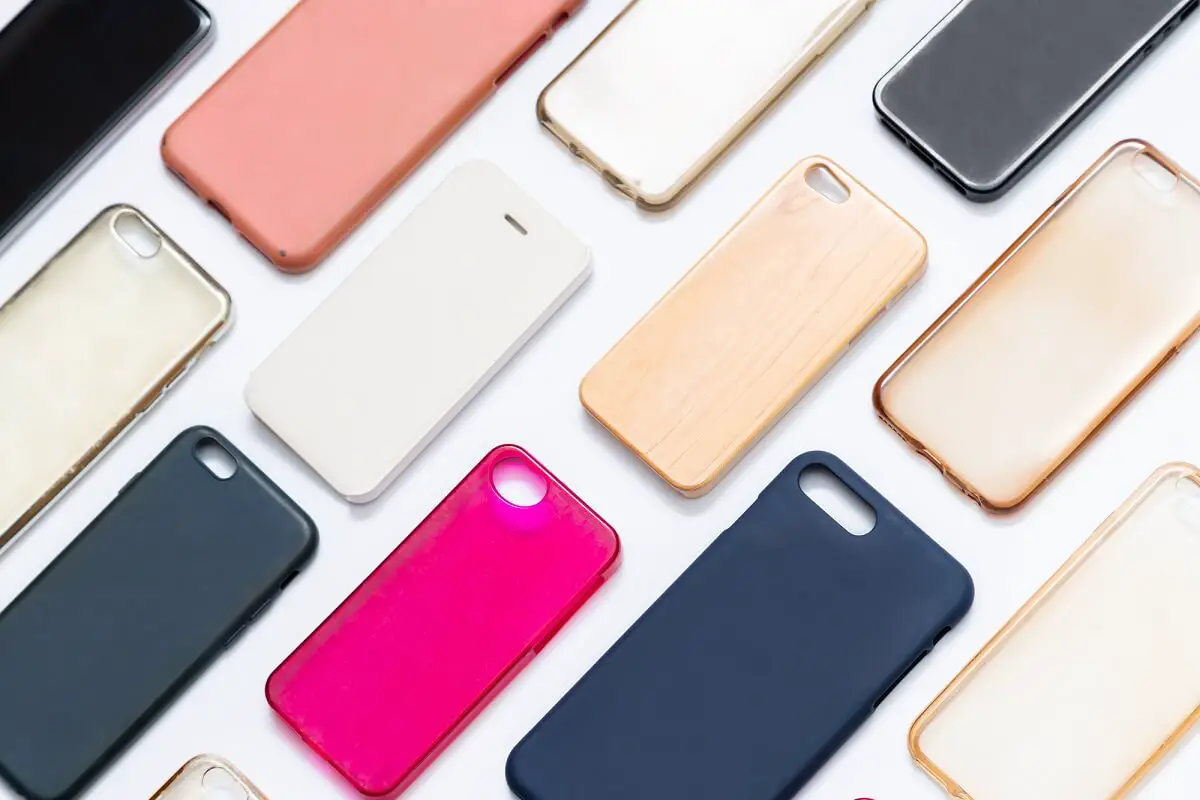So, you’ve just invested in a shiny, new smartphone. The sleek design, smooth touch, and crystal-clear display probably have you hooked. Now, you’re eager to maintain its pristine condition.
But here’s the dilemma—should you go for a phone skin or a phone case? This is a common predicament, a clash between style, substance, aesthetics, and armor.
On one side, there’s the allure of phone skins—the embodiment of chic, offering a personalized touch while keeping the device slim. On the other hand, phone cases stand as the guardians of your gadget, promising to shield it from the perils of daily life, albeit with a bit more bulk.
Understanding the differences between these two can help make the decision-making process smoother and more informed. So, let’s dive in and explore what sets phone skins apart from phone cases.
Phone Skins: A Sleek Second Skin

Phone skins act like a second skin to your device, hence the nickname. Here’s what you need to know:
- Material: Phone skins are typically made of vinyl. They adhere directly to your device, forming a thin yet durable layer that protects against scratches and minor damage.
- Design: With an endless array of designs, textures, and colors, you can choose one that resonates with your style. Whether you’re into bold patterns, solid colors, or textured finishes, there’s a phone skin out there that’s just right for you.
- Grip: Ever had that mini heart attack when your phone almost slipped out of your hand? With a phone skin, you’ll experience an improved grip. The texture of the skin makes the device less slippery, reducing the risk of accidental drops.
- Shock Absorption: Phone skins are excellent for protecting against scratches and everyday wear and tear. However, if you’re prone to dropping your phone, a phone skin won’t offer much in terms of shock absorption.
Phone skins offer a blend of style, protection, and convenience. They’re a go-to for anyone looking to keep their device looking sharp and scratch-free, without adding any extra bulk. They might not be the heavy-duty protectors like most phone cases are, but they do a stellar job for those who treat their devices with care and want an added touch of personalization.
Phone Cases: Robust And Reliable Protection
Designed with the user’s needs in mind, phone cases serve as the first line of defense against the numerous perils your device might encounter. So, what makes them stand out as a protective accessory? Here’s a breakdown:
- Material: Phone cases come in a plastic, silicone, and leather. Each material offers unique protective properties and aesthetic appeal, allowing you to choose what aligns with your needs and style.
- Design: From slim and sleek to rugged and bulky, the design options are extensive. Whether you’re looking for minimalistic elegance or heavy-duty protection, there’s a case out there that fits the bill.
- Grip: A phone case can improve the device’s grip, reducing the likelihood of slips and falls. This added security can be particularly beneficial for those with larger devices or those who often multitask.
- Shock Absorption: Many phone cases are engineered with shock-absorbent features, safeguarding your device from drops and impacts. This protective layer can be a game-changer, especially if you have a knack for accidental drops.
With myriad protective properties and design options, phone cases are a reliable choice for those seeking to safeguard their devices. They encapsulate your device, offering a comprehensive protective solution against various forms of potential damage.
Cost And Longevity: Assessing Value For Money

When considering cost, phone skins are generally more affordable than phone cases. However, it’s essential to assess the value for money based on individual needs and preferences.
Here’s an in-depth look at how you can evaluate the cost and longevity of phone skins and phone cases:
- Initial Investment: Generally, phone skins have a lower upfront cost compared to phone cases. But if safeguarding your device is a top priority, the initial higher cost might be justifiable.
- Durability: Phone skins might not endure wear and tear as well as phone cases. If you prefer a long-term protective solution, the latter would be a better investment.
- Preferences: If you lead an active lifestyle or work in a field where your phone is prone to damage that could result in your phone not charging, investing in a robust case might offer better value for money.
- Replacement: If you tend to switch devices often, using a phone skin might make more sense. Otherwise, a durable phone case would be a better and more cost-effective solution in the long run.
Those seeking long-term protection and durability might find investing in a quality phone case more economical in the long run. Others may prefer the cost-effective and stylish appeal of phone skins. The choice depends on your needs and preferences.
The Takeaway
Deciding between a phone skin and a phone case hinges on individual needs and preferences. Phone skins are ideal for those seeking a sleek, stylish appearance and light protection, while phone cases offer robust protection and additional features at the expense of added bulk.
Weighing the pros and cons and assessing what matters most will guide you in making a choice that aligns with your lifestyle. Ultimately, it’s about finding the balance between style, protection, and functionality that suits you best.
